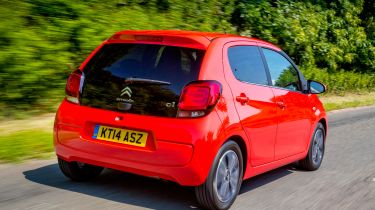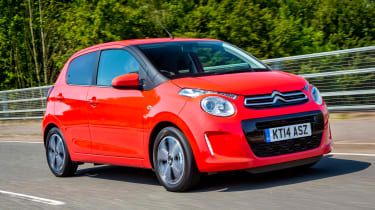Citroën C1 hatchback (2014-2022) - Engines, drive & performance
The Citroen C1 is a competent performer, but falls short of the standards set by the Hyundai i10
One of the main criticisms of the Citroen C1 is that the car uses the same underpinnings as the previous model. It has soft suspension that’s comfortable but allows too much body lean in corners. That makes the C1 less fun to drive than the Hyundai i10 or Volkswagen up!. Admittedly, light steering makes the C1 very easy to manoeuvre in town, but it doesn’t inspire confidence in bends and there’s not much feedback to warn you when the car is reaching its limit and about to lose grip.
Citroen C1 petrol engines
The 1.0-litre petrol engine is based on the engine from the original C1. It makes the same distinctive thrummy noise as other three-cylinder engines, so you don’t really mind working it hard. This is just as well, as you have to do that in order to make decent progress and keep up with traffic. Performance is leisurely taking 14 seconds to get from 0-62mph. The noisy engine isn’t as enjoyable on a long motorway journey, when its charismatic thrum soon becomes a wearing, constant drone.
From early 2019, the 1.2-litre petrol engine was discontinued in the C1 range.
Previously, the C1 was also available with an automated manual gearbox, meaning there was no clutch pedal to operate. This was discontinued in early 2020, leaving the five-speed manual as the only option available in the C1. Unless you need a car with an automatic gearbox, this is no real loss as it was even slower, less efficient and much more expensive to buy.










